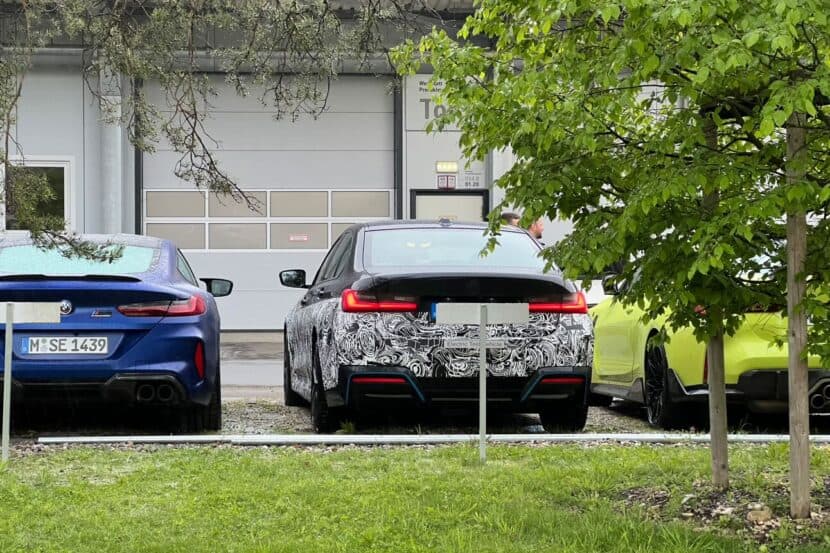BMW has been hosting i3 training events to get their client advisers up to speed and ready to sell the car. I’m very happy to hear they are doing this because I was really beginning to get concerned that they wouldn’t properly prepare their sales staff for this unique vehicle. I even dedicated a post a few months ago to this very topic. I’ve now talked to a few client advisers that have done the training and they reported that they did indeed get a lot of useful information which will help them service their clients.
This week the latest round of training sessions are being held up at BMW headquarters in Woodcliff Lake, NJ and details of what is being taught are starting to leak out from some of the client advisers that are there. A couple things of interest shared were details about the range extender the i3 will offer as an option.
First, it was learned that the range extender is automatically activated once the state of charge drops below 6.5%. At that moment, it turns on and it’s function is to bring the state of charge back up to 6.5% and to maintain that level of charge. It will not charge the car much above 6.5%, and it will not run if the car is stopped, unless the state of charge is critically low. Therefore you can’t it in a stationary i3 and wait for the state of charge to increase. I knew the automatic turn on point was around 5% to 6%, but now we have an exact level when it engages.
You cannot manually turn the range extender off. This is contrary to what I was told by an i3 product manager at the i3 debut in New York City last July. I remember asking this specific question by saying “What if I knew I’d make it home on electric, say I only had a mile or two to go and the REx was about to turn on, could I just turn it off so it’s doesn’t fire up?” I was told yes, there will be a setting that will allow you to turn it off before it engages, but that setting will reset once you turn the car off. The reason for that is so that the next time you get in the car you won’t forget that you had turned off the REx and you may end up needing it. I would have definitely preferred to be able to turn it off manually, and honestly can’t see why that isn’t going to be allowed.
We also found out that the client advisers have been told that while the range extender is in operation the speed of the car will be electronically limited to 70mph. I’m not buying that; I think they were misinformed. I really think there was a miscommunication on this one because I have had conversations with people at BMW that know a lot about this and even very recently they assured me that there isn’t an electronically governed speed limit while the range extender is in operation. I believe the confusion about 70mph is based on the fact that 70mph is basically the top speed that the range extender can comfortably maintain the 6.5% state of charge at while driving on relatively flat ground. The people I’ve talked to in Europe that have i3’s with the range extender say they can drive on the highway at just about 120 km/hr (75mph) and maintain the SOC, but anything higher and the SOC will gradually diminish. It’s my contention that the people running the training sessions either aren’t 100% clear on this, or they really meant for the client advisers to warn the customers that 70mph is really the fastest they should drive at if they need to drive for a long distance. In any event, I believe they got this one wrong and there isn’t an electronic limit, we’ll find out pretty soon since the US i3 launch should be in about two weeks.
I saved the biggest news for last. It was learned that the US version of the i3 REx will have not have a 2.4 gallon gas tank as the European version does. Instead it will have only a 1.9 gallon gas tank. I’m going to pause for a moment to let everybody scream bloody murder now…… I know it’s only half a gallon, but in the case of the i3, that just reduced the gas tank by 21%! For me this is a non-issue, but I know there are a lot of people that will not like this at all. 99% of the time I use the added range of the REx it will likely be for less than 40 miles. Yes, this does reduce the utility of long range trips even more, as you will now probably have to stop for gas every 40 or 50 miles. There was no reasons given for the smaller gas tank but as far as I can imagine, this comes down to one of two things. Since BMW wants needs the i3 REx to qualify as a BEVx and one of the qualifications of the BEVx is that the car has a smaller gasoline range than it does electric range, my thinking is that one of these two things led to the smaller gas tank:
1) The EPA rating for all electric range on the REx came out lower than they believed it would. If they used the 2.4 gallon gas tank, the gas range would be slightly longer than the all electric range, therefore causing it to be disqualified for the BEVx designation. The only simple way to make the gas range less than the electric range was to reduce the gas range by using a smaller gas tank.
2) The EPA rating for the MPG while in range extender mode came out higher than expected, creating the same problem cited above; a longer range in REx mode than in all electric mode. I’ve heard it gets anywhere from 36mpg to 46mpg from people driving REx’s in Europe so this is a possibility. If the range extender got rated at 40mpg, and was using a 2.4 gallon gas tank, then the electric range would need to be 96 miles per charge, which is highly unlikely. If they cut the tank down to 1.9 gallons, then the electric range would only need to be greater than 79 miles per charge, which I believe is attainable, even considering that the REx version will have 6.5% less battery to use than the BEV i3 does, as this is held in reserve as a buffer.
So what do you think? Has any of these new revelations changed you mind about the REx?
Article was first published on bmwi3blogspot




































































